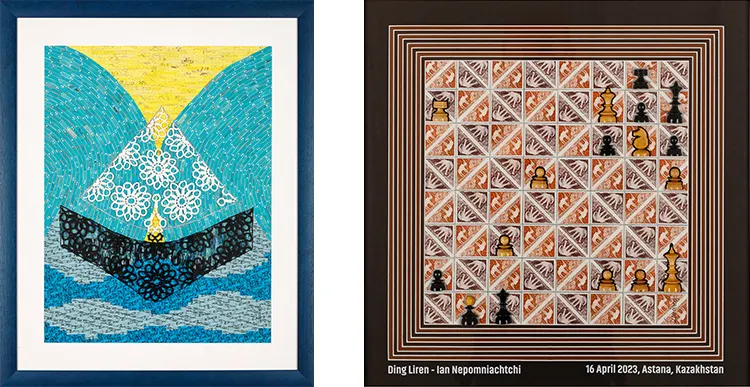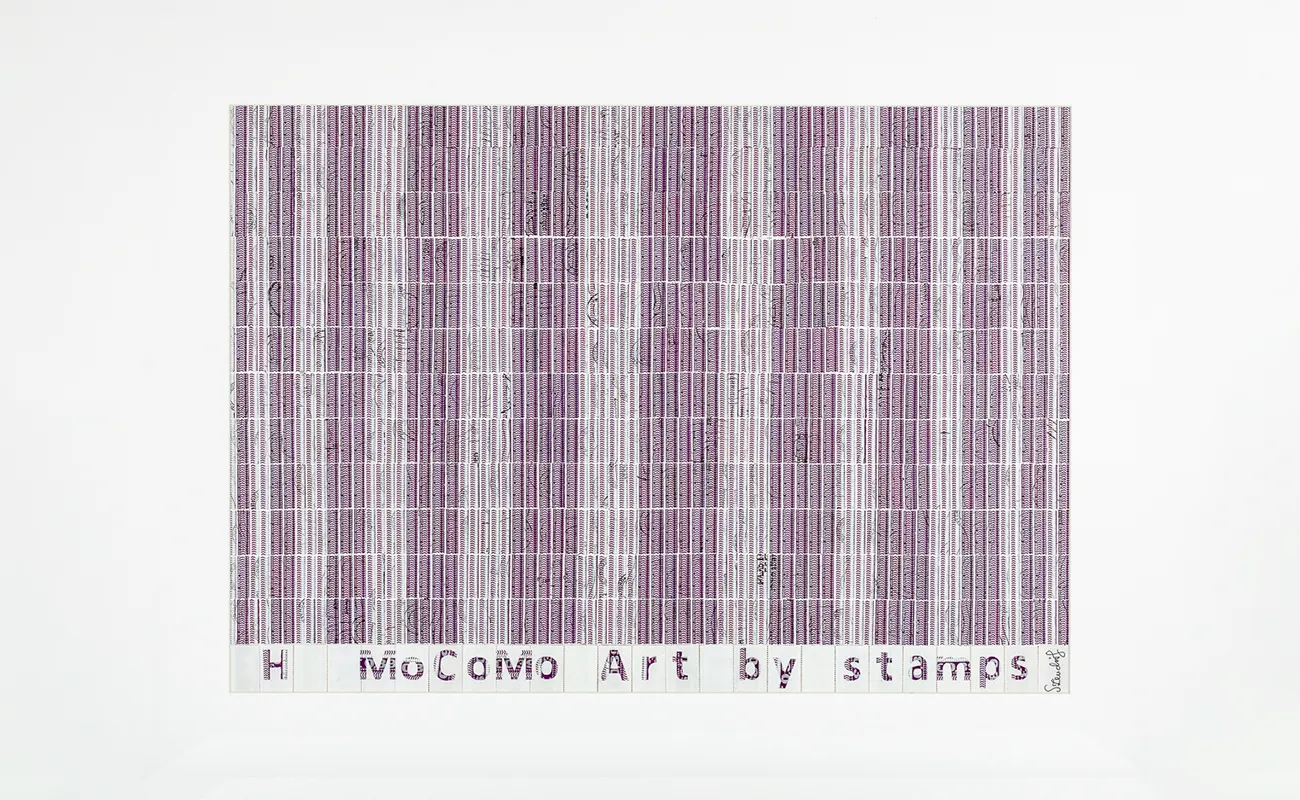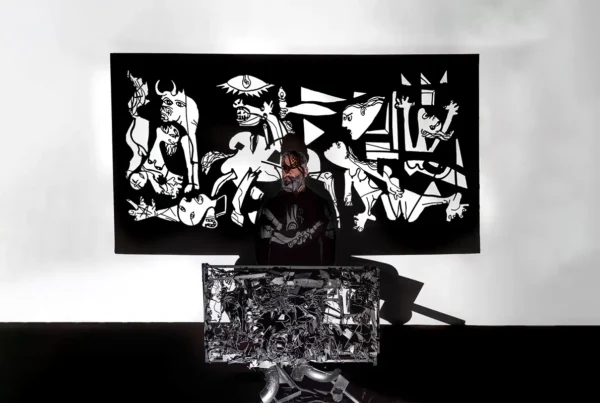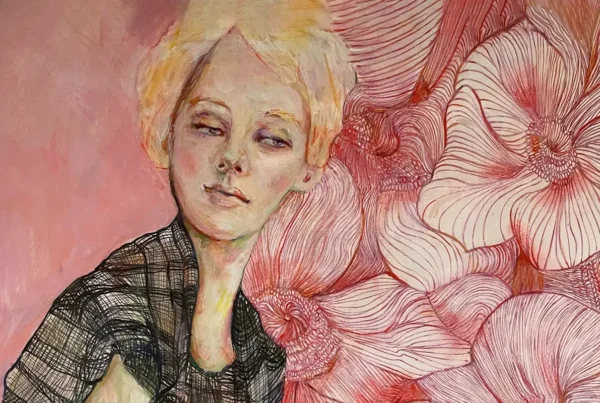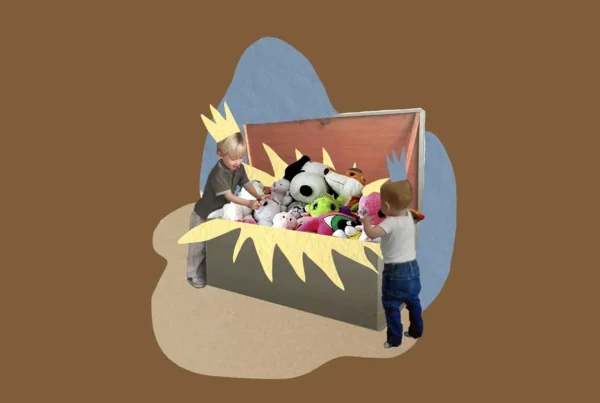“Nowadays, I tell tales to everyone.”
A Late but Unstoppable Journey into Art
Judit Szendrei’s artistic journey did not follow the conventional path of early immersion and formal training. Living in Hungary, she balances multiple roles—an economist by profession, a mother of three, and an artist who discovered her creative passion later in life. While art had always intrigued her, it wasn’t until a seemingly simple activity with her daughter Zsofi that her true artistic calling emerged. Zsofi, who has Down syndrome, loved soaking and drying postage stamps, turning it into a shared pastime. Over time, an extensive collection of similar stamps accumulated, prompting Szendrei to experiment with arranging them into shapes and patterns. What began as a casual activity soon transformed into a deeply fulfilling practice, bringing her both tranquility and the thrill of crafting something visually striking.
Her artistic approach is entirely self-directed, driven more by instinct and exploration than by adherence to traditional methodologies. Unlike many artists who begin with a formal education in the arts, Szendrei’s entry into creative expression was organic, arising from a spontaneous idea that evolved into a unique artistic identity. Her use of postage stamps as a primary medium allows her to blend personal narratives with historical fragments, as each tiny piece carries its own past and cultural significance. This distinctive style—intricate, textured, and meticulously composed—sets her apart from conventional collage or mosaic artists.
The process of working with stamps has become more than just an artistic practice for her; it is a form of storytelling. As a mother, Szendrei often entertained her children with stories, a tradition that now extends into her artwork. Through color, composition, and carefully chosen imagery, she continues to narrate visual tales that invite viewers to discover connections between past and present, personal and universal. Her artistic evolution is a testament to the idea that creative expression can emerge from unexpected places, turning even the most ordinary materials into something extraordinary.
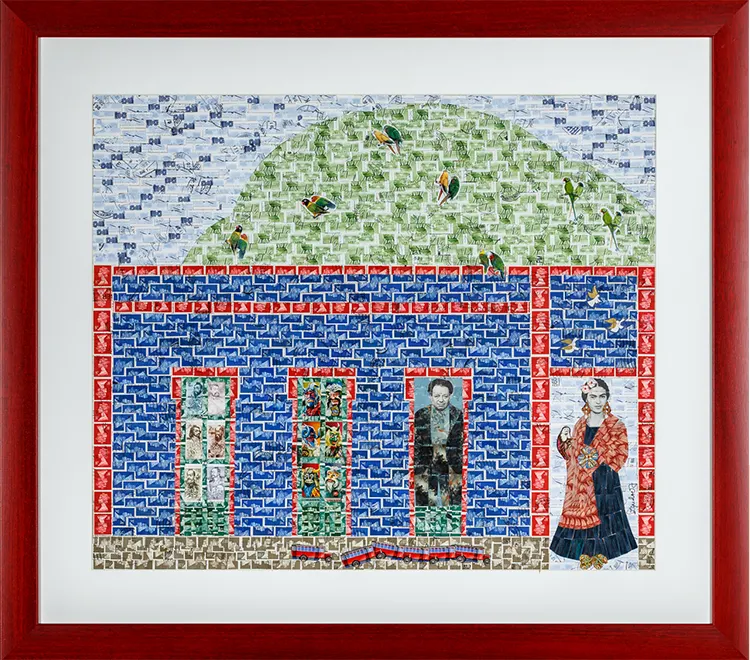
Judit Szendrei: Defining an Unclassifiable Artistic Style
Szendrei’s work resists easy categorization. It intersects the boundaries of collage, mosaic, and montage, resulting in a technique she refers to as “MoCoMo by Stamps.” While some compositions take direct inspiration from the imagery found on the stamps themselves, others are shaped by her personal experiences, memories, and emotions. Unlike many artists who work within a consistent thematic framework, Szendrei embraces fluidity, ensuring that each piece remains a singular expression, unbound by recurring motifs. However, color plays a unifying role in her portfolio—her works are often strikingly vibrant, composed of countless individual stamps that come together to form intricate visual symphonies.
Beyond aesthetics, her technique involves a layered interplay of realism and abstraction. Some of her pieces depict recognizable figures, landscapes, or architectural elements, while others lean into more conceptual compositions that challenge the viewer’s perception. The structured repetition of stamps lends a rhythmic quality to certain works, whereas others possess a more organic, free-flowing energy. By juxtaposing monochromatic photographic elements with the vivid hues of postage stamps, Szendrei explores contrasts—between past and present, individuality and collectivity, permanence and impermanence.
Historical and cultural references frequently surface in her work, often through subtle yet deliberate choices of stamps. She has drawn inspiration from figures such as Frida Kahlo, chess grandmasters, and even iconic landmarks, using postage stamps as a medium to reframe and reinterpret their stories. Her practice echoes elements of pop art, dadaism, and contemporary assemblage, yet remains distinctly her own. With an approach that fuses meticulous craftsmanship with conceptual depth, Szendrei transforms a common, overlooked object into a powerful storytelling tool, demonstrating how even the smallest fragments of history can be reassembled into something entirely new.
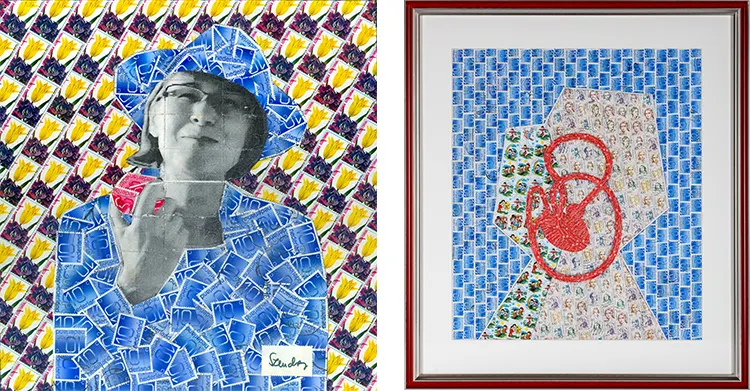
A Creative Space Rooted in Music and Memory
Szendrei’s artistic process is deeply intertwined with her surroundings. She shares a study space with her husband, a room filled with the countless images she has created. This environment is not just a workspace but a sanctuary where she immerses herself in the act of creation. Evenings often find them retreating to this shared space, accompanied by the music of their favorite singer, Luciano Pavarotti. Music is not merely a background element; it shapes the rhythm of her work, influencing the pace and mood of her artistic process.
Despite the harmony within her workspace, there are moments of frustration—particularly when she cannot find the exact stamp she needs. The precision required for her compositions means that each individual stamp serves a purpose, contributing to the larger visual narrative. When the right piece is missing, it disrupts the flow of her creative momentum. However, her family has learned to navigate these moments, supporting her through the occasional artistic struggle.
Her influences are as eclectic as her artistic style. Andy Warhol stands as her primary inspiration, though she has drawn creative energy from many artists encountered during frequent exhibition visits. At different points, she has been captivated by the works of van Gogh, Picasso, and Frida Kahlo, each contributing to her evolving artistic language. These influences do not manifest as direct imitations but rather as echoes in her work, as she channels their spirit through the unconventional medium of postage stamps. By incorporating historical and artistic references into her pieces, she creates a bridge between past and present, engaging in a silent dialogue with the artists she admires.
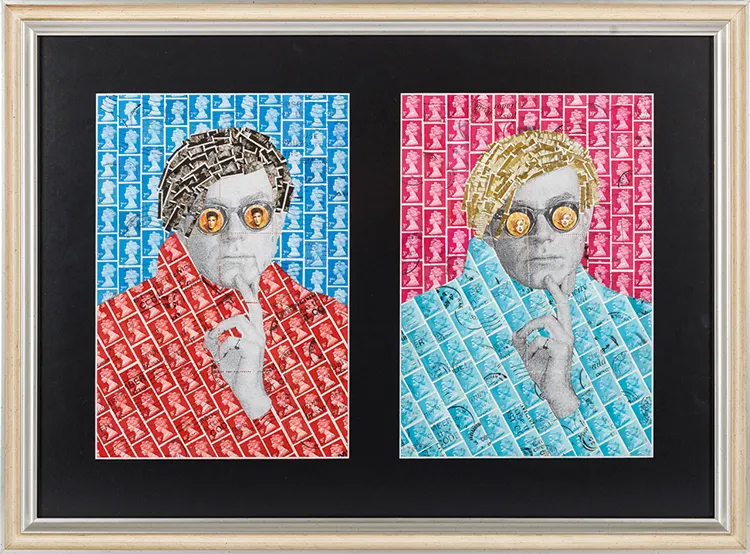
Judit Szendrei: A Tribute to Csontváry and an Ever-Expanding Vision
Among her many works, one holds particular significance—a tribute to Hungarian painter Tivadar Csontváry Kosztka. Csontváry’s legacy was validated posthumously when Picasso, in 1948, acknowledged him as one of the few truly great painters of the century. Inspired by this connection, Szendrei was determined to create a piece that honored both Csontváry and Picasso, especially after being invited to exhibit in Pécs, the city that houses Csontváry’s most renowned paintings.
In preparing for this work, she embarked on an extensive research process, tracing the history of Csontváry’s paintings and identifying which pieces had been exhibited in Paris—potentially seen by Picasso himself. She ultimately chose Pilgrimage to Cedars in Lebanon as the focal point of her composition. Her research led her to discover the actual grove where Csontváry had painted and the tree that served as his subject. Tragically, this tree, known as Lamartine’s Tree or the Tree of the Dead Christ, succumbed to dehydration in the 1960s. Szendrei’s artwork reflects this loss, portraying a tree that is half alive, half withered. She incorporated stamps featuring the Shroud of Turin to depict its essence, weaving together historical, religious, and artistic symbolism into a single cohesive image.
Her ambitions extend beyond this tribute. One of her long-held aspirations is to refine her technique for music-themed compositions. She has already created two pieces in this series—one featuring Freddie Mercury singing and another illustrating Beethoven’s Triple Concerto. However, she envisions pushing these works further, enhancing their visual and technical complexity. Despite her self-professed limitations in technical execution, her drive for experimentation ensures that her artistic evolution remains ongoing. Whether through postage stamps, embroidery, or unexpected found objects like broken porcelain, she continuously seeks new ways to innovate, transforming familiar materials into thought-provoking art.
